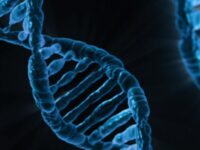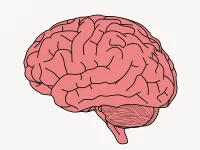Many people have likely heard that humans are 98% related to chimps, but would you guess that we also share 50 to 60% of our genes with bananas? This surprising overlap is the result of billions of years of evolution from an ancient common ancestor. While humans and bananas have acquired different structures and functions, many of our fundamental cell mechanisms are largely the same, a connection reflected in the shared portion of our genetic codes.
Scientists discovered these genetic similarities through genome sequencing, which was first completed for humans in 2003. The genome is an organism’s set of genetic information, serving as the instruction manual on how to develop essential proteins. An individual’s unique arrangement of DNA nucleotides determines physical characteristics like hair and eye color.
Humans and bananas share a significant portion of genes because evolution occurs through alterations in preexisting genetic code. Evolution causes species to branch off from each other to form separate species. It is the changing of populations through generations, reflecting adaptations to their environments. Scientists believe that all organisms on Earth share a last universal common ancestor — a single cell that formed in a primordial pit roughly 3.5 billion years ago. From this ancestral cell emerged the great diversity of life seen today.
“Humans and bananas share a significant portion of genes because evolution occurs through alterations in preexisting genetic code.”
Based on gene sequence estimates, plants and animals diverged about 1.5 billion years ago. Therefore, the similarities in human and banana genes are remnants of the most recent ancestor’s genome before the two kingdoms branched off. Many of these shared genes are essential to basic cell functions, such as DNA replication and cell division. Due to their importance, these genes were conserved while plants and animals evolved in their respective branches.
Understanding these overlaps and divergences in genomes can help scientists determine what makes us uniquely human and provide deeper insight into the inner workings of our bodies. Since the initial sequencing of the human genome, technological advances have made genomics more efficient and affordable. As a result, genome sequencing has become an increasingly useful tool in healthcare. Genomics enhances the prediction, diagnosis, and treatment of numerous diseases, providing patients with more personalized and effective care. These life-changing applications highlight the importance of understanding the functions and influences of our underlying genetic material.
As scientists continue to gather greater knowledge of the genomes of humans and other organisms, our genetic similarities to numerous species serve as a reminder of how connected Earth’s organisms are. Along with sharing a planet, all life on Earth links to a common lineage tracing back to a single-celled organism that lived billions of years ago.






